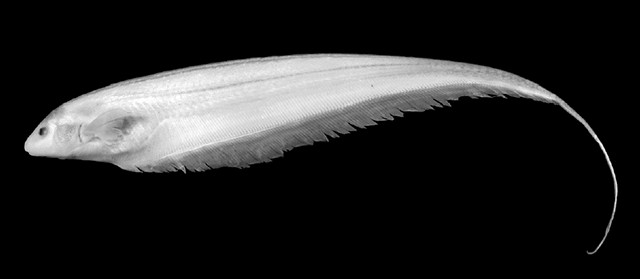| Sternopygidae (Glass knifefishes) |
|
|
benthopelagic; freshwater |
| South America: upper Rio São Francisco basin, Brazil. |
|
Anal soft rays: 164-186. Distinguished from all species of the Archolaemus by the absence of a narrow dark stripe along the lateral line and absence of a broad band of dusky to dark pigmentation overlying the basal pterygiophores of the anal fin (versus the presence of such dark pigmentation). Differs further from other congeners by having the following combination of characters: gape short, the rictus falling short of the vertical through the posterior border of the posterior nares; 16 pectoral-fin rays; 164-186 anal-fin rays; anteroposterior length of premaxilla equal to the transverse width; length of the posterior ceratohyal approximately the same length as the ventral hypohyal; length of the coronomeckelian bone less than 20% the length of Meckel’s cartilage; teeth on the dentary restricted to the anterior one-half or slightly more of the dorsal margin of the dentary (Ref. 93148). |
| Inhabits portion of a river characterized by large rapids, a major waterfall and rocky and sandy substrates (Ref. 93148). |
|
Data deficient (DD); Date assessed: 07 November 2018 Ref. (130435)
|
| harmless |
Source and more info: www.fishbase.org. For personal, classroom, and other internal use only. Not for publication.
